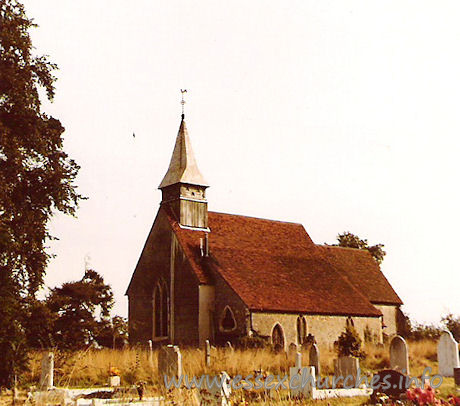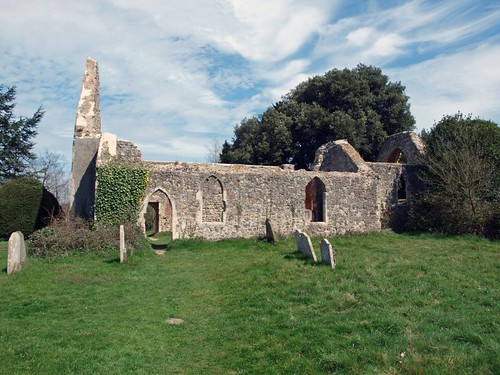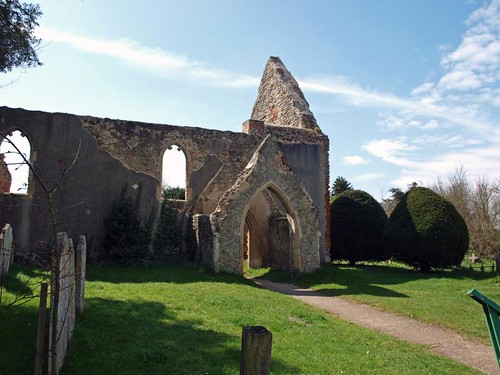St Peter is a ruin and rather a nice one. Following a major fire in 1971 it was abandoned but having been Grade II listed in 1966 it is now in the care of Essex County Council. A quick Google reveals all sorts of nonsense about it being used for witchcraft rituals and apparently it's a huge draw for those interested in the paranormal - all bollocks of course but here's a hilarious investigation.
I think it's actually more attractive now than when it was extant although it's a shame to have lost Mee's Morris chancel window.
CHURCH. Nave, lower (rebuilt) chancel, and (rebuilt) belfry Roman brick quoins at the W end date the nave as Norman. Nice W gallery with twisted balusters, C18.

ALRESFORD. A scattered little place on high tableland, nature has endowed it with fine woods round Alresford Hall, and round the old farmhouse called Tenpenny Brook, which has timbers that have lasted 400 years. A little way off (a mile to the west) a few fragments of brick and tessellated paving mark the site of a Roman house; we have seen Samian ware and painted plaster from it in Colchester Museum. A long lane leads us to the little church standing with a cross to village heroes in the loneliness of the fields. The shingled spire of the belfry rises above the walls the Normans built, and there are Roman tiles set in the corners of the nave. Over the altar is a lovely William Morris window.
Flickr.
Simon K.
This small Norman church was destroyed by fire in 1972, and they took
the opportunity to build a new one half a mile off in the centre of
the village. There's no doubt that twenty years later it would have
been restored, but it is a good ruin, all exterior walls surviving in
flint, ragstone and red brick, the window openings filling the ruin
with light.
Alresford, pronounced Arls-f'd, is a big village, and you can't help thinking it must have lost a sense of its identity when it lost its church. But it still has its railway station, so I took the train back into Colchester and then home to Ipswich.


I’ve just made a clay ‘replica’ of the church (pre fire) which will form part of the subject of my upcoming drawing series.
ReplyDelete